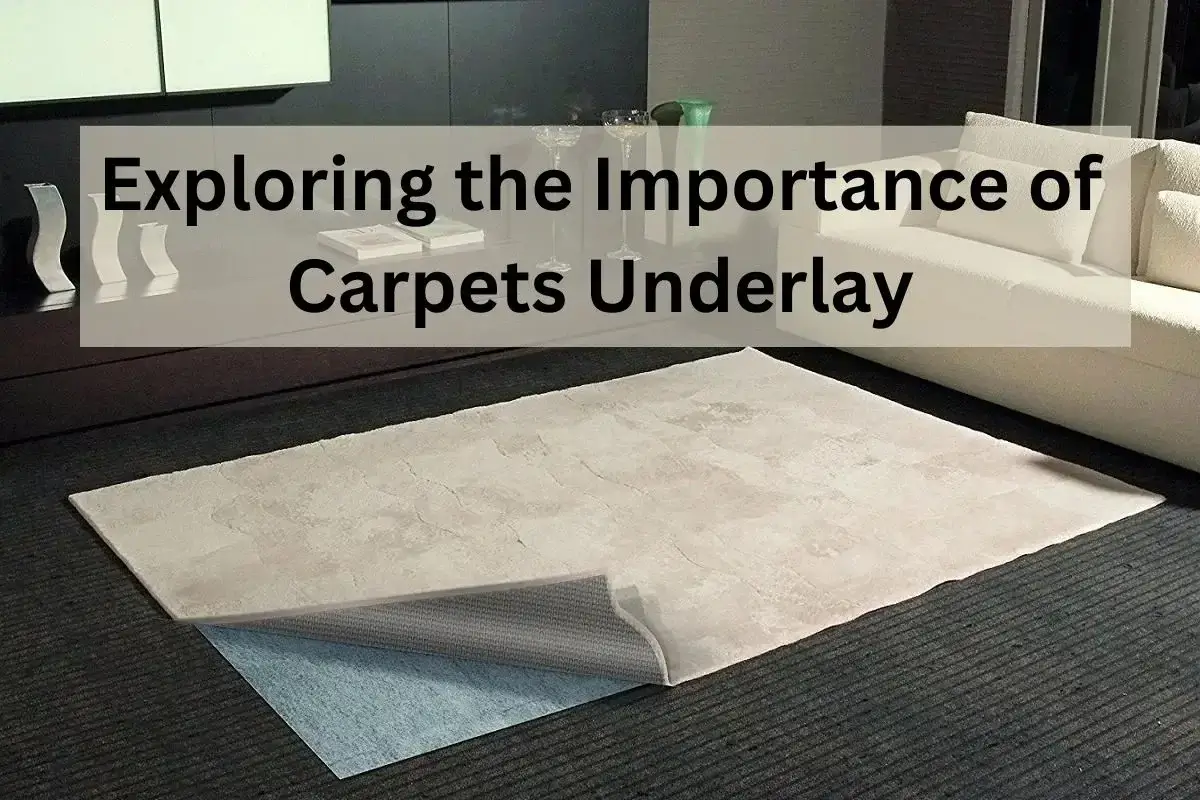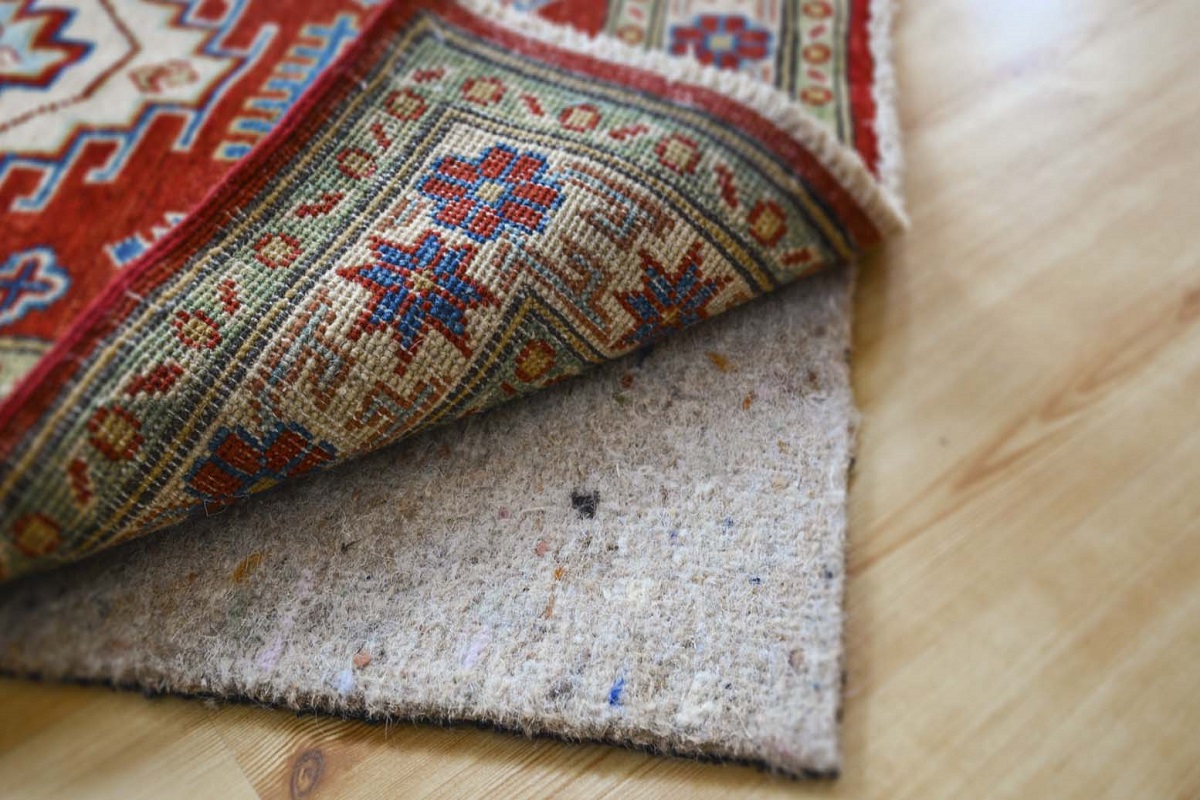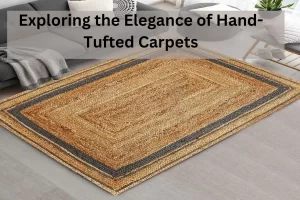
In the tapestry of interior design, where aesthetics and functionality seamlessly merge, the unsung hero often concealed beneath the surface is the carpets underlay. Beyond the surface allure of a well-chosen carpet lies a foundational element that significantly influences our daily experience—the underlay. This exploration ventures into the pivotal role that carpets underlay plays in redefining not only the comfort of our living spaces but also the resilience and performance of our beloved carpets.
Picture stepping onto a carpeted floor that not only feels sumptuously soft beneath your feet but also exudes a hushed tranquillity as you move. This sensory delight is intricately woven with the underlay’s ability to enhance the underfoot experience and provide sound insulation, transforming any room into a haven of comfort and quietude.
Yet, the importance of carpet-underlay-underlay underlay extends beyond mere comfort; it’s a linchpin in the longevity of our flooring. Shielding carpets from the rigours of daily wear and tear, the right underlay serves as a silent guardian, prolonging the life of carpets and preserving their aesthetic allure.
Join us on a journey through the layers of this often underestimated element, as we uncover the concealed magic beneath our carpets and explore the myriad ways in which underlay contributes to the very essence of our living spaces.
Benefits of Quality Carpets Underlay
Investing in quality carpets underlay is akin to laying the foundation for a superior flooring experience. The benefits derived from choosing the right underlay extend far beyond mere padding. Here are some key advantages of opting for high-quality carpets underlay:
Enhanced Comfort and Softness:
Quality underlay provides an additional layer of cushioning, creating a luxurious and comfortable feel underfoot. This not only contributes to a more enjoyable walking experience but also adds a touch of opulence to your living spaces.
Noise Reduction and Sound Insulation:
A notable benefit of quality underlay is its ability to absorb and dampen sound. By minimising the impact of footsteps and suppressing airborne noise, underlay contributes to a quieter and more serene indoor environment.
Improved Durability and Longevity:
Carpets underlay acts as a protective barrier between the carpet and the subfloor, shielding the carpet from wear and tear. This not only preserves the carpet’s aesthetic appeal but also extends its lifespan, making it a wise investment in the long run.
Thermal Insulation:
Quality underlay adds an extra layer of thermal insulation, helping to regulate indoor temperatures. This not only contributes to energy efficiency by reducing the need for constant heating or cooling but also creates a cosy and inviting atmosphere within your home.
Support for Different Carpet Types:
Different carpets have varying demands, and quality underlay is versatile enough to support a wide range of carpet types and styles. Whether you have a plush, dense carpet or a thinner, looped design, the right underlay provides consistent support.
Ease of Maintenance:
Underlay makes cleaning and maintenance more manageable by acting as a barrier against dirt and moisture. This not only helps in preserving the carpet’s appearance but also simplifies the cleaning process.
Improved Insulation Against Subfloor Irregularities:
In addition to providing comfort, underlay helps smooth out minor subfloor irregularities, ensuring a more even and aesthetically pleasing carpet installation.
Insulation Properties Of Carpets Underlay
Carpets underlay serves as a silent contributor to the insulation properties of your living space, offering benefits that extend beyond mere comfort. Understanding and appreciating these insulation properties shed light on the crucial role underlay plays in creating a thermally efficient and cosy environment. Here are key aspects of insulation properties associated with carpets underlay:
Thermal Insulation:
Carpets underlay acts as a barrier that helps regulate temperature by providing an additional layer of thermal insulation. This insulation works in both hot and cold climates, preventing heat from escaping in colder weather and helping to keep spaces cooler during warmer seasons.
Energy Efficiency:
By enhancing the insulation of your floors, quality underlay contributes to overall energy efficiency. Improved insulation means reduced reliance on heating and cooling systems, translating to potential energy savings and a more environmentally conscious living space.
Creating a Cosy Atmosphere:
The thermal resistance offered by underlay not only has practical benefits but also contributes to the creation of a cosy and inviting atmosphere within your home. Spaces feel warmer and more comfortable, encouraging a sense of relaxation and well-being.
Noise Reduction:
In addition to thermal insulation, underlay contributes to acoustic insulation by dampening sound. This quality not only minimises airborne noise but also reduces impact sound, creating a quieter and more peaceful living environment.
Moisture Barrier:
Some underlay materials act as a moisture barrier, preventing dampness from reaching the carpet and subfloor. This is particularly valuable in spaces prone to humidity or potential liquid spills, as it helps protect the integrity of both the carpet and the underlying structure.
Consistent Temperature Distribution:
Underlay helps create a more even distribution of temperature across the floor surface. This ensures that walking surfaces remain comfortably warm, reducing the likelihood of encountering cold spots often associated with direct contact with the subfloor.
Exploring Different Types of Carpets Underlay
Navigating the diverse landscape of carpets underlay involves understanding the characteristics and benefits of various types. Each underlay type offers distinct advantages, catering to different preferences and practical considerations. Let’s explore the different types of carpets underlay available:
Foam Underlay:
Characteristics: Lightweight and affordable, foam underlay is known for its excellent cushioning properties.
Benefits: Enhances underfoot comfort, absorbs impact, and provides sound insulation.
Ideal Use Cases: Well-suited for areas with moderate foot traffic, such as bedrooms and living rooms.
Rubber Underlay:
Characteristics: Durable and resilient, rubber underlay is known for its longevity and ability to maintain its shape.
Benefits: Offers excellent support for heavy foot traffic, minimises wear and tear on carpets, and provides effective sound insulation.
Ideal Environments: Ideal for high-traffic areas like hallways, stairs, and commercial spaces.
Felt Underlay:
Characteristics: Composed of natural fibres or recycled materials, felt underlay is known for its eco-friendly properties.
Benefits: Provides a soft and supportive feel underfoot, offers thermal insulation, and is suitable for various carpet types.
Application: Commonly used in residential settings, especially bedrooms and areas where a cosy feel is desired.
Combination Underlay:
Characteristics: A blend of materials such as foam and rubber, combination underlay aims to combine the benefits of different materials.
Benefits: Offers a balance of comfort and durability, suitable for a variety of carpet types and traffic levels.
Versatility: Ideal for households with diverse flooring needs, accommodating both comfort and resilience.
Crumb Rubber Underlay:
Characteristics: Made from recycled rubber, crumb rubber underlay is an environmentally friendly option.
Benefits: Provides excellent sound insulation, durability, and support for heavy furniture.
Recommended for: Suitable for areas where noise reduction is a priority, such as apartments or multi-story buildings.
Sponge Rubber Underlay:
Characteristics: Sponge rubber underlay is soft and flexible, adapting well to uneven subfloors.
Benefits: Offers enhanced underfoot comfort, sound insulation, and accommodates irregular subfloor surfaces.
Ideal for: Suitable for areas where comfort is paramount, such as bedrooms and lounges.
Uses of Underlay Carpet
The uses of underlay carpet extend beyond being a mere foundation for your floor covering. This essential component serves several crucial purposes, enhancing both the practical and aesthetic aspects of your living spaces. Here are the key uses of underlay carpet:
Enhanced Comfort:
Underlay adds a layer of cushioning beneath your carpet, significantly enhancing underfoot comfort. This makes walking, sitting, and standing on the carpeted surface a more pleasant experience.
Noise Reduction:
Underlay acts as a sound absorber, reducing both airborne and impact noise. This is particularly beneficial in multi-story buildings, apartments, or areas where minimising noise is a priority.
Prolonging Carpet Lifespan:
One of the primary uses of underlay is to protect the carpet from wear and tear. By absorbing the impact of foot traffic, the underlay helps preserve the integrity of the carpet fibres, extending its overall lifespan.
Insulation Properties:
Underlay provides thermal insulation, helping to regulate indoor temperatures. This contributes to energy efficiency by reducing the need for constant heating or cooling, creating a more comfortable and cost-effective living environment.
Smoothing Subfloor Irregularities:
Underlay helps create a smooth and even surface for carpet installation by compensating for minor irregularities in the subfloor. This ensures a professional-looking and aesthetically pleasing result.
Support for Different Carpet Types:
Underlay is versatile and can accommodate various carpet types and styles. Whether you have a thick, plush carpet or a thinner, looped design, the right underlay provides consistent support, enhancing the performance of your chosen floor covering.
Easy Maintenance:
Underlay acts as a barrier, preventing dust and dirt from reaching the subfloor. This makes cleaning and maintaining the carpeted area more manageable, promoting a cleaner and healthier indoor environment.
Moisture Protection:
Some types of underlay include moisture-resistant properties, acting as a barrier against dampness. This is especially valuable in areas prone to humidity or where spills are likely to occur, protecting both the carpet and the subfloor.
Improving Acoustic Comfort:
Beyond reducing noise, underlay contributes to a more acoustically comfortable space. It softens the impact of footsteps and other sounds, creating a quieter and more peaceful atmosphere.
Creating a Uniform Appearance:
Underlay helps prevent carpet wrinkling or buckling, ensuring a smooth and uniform appearance. This is particularly important in high-traffic areas where the carpet is more susceptible to movement.
Conclusion
In conclusion, the unassuming yet indispensable role of carpets underlay in shaping the comfort, durability, and overall appeal of our living spaces cannot be overstated. As we’ve ventured through the layers of this often overlooked element, it becomes evident that
underlay is not merely a supportive foundation for carpets but a transformative force in the world of interior design.
The myriad benefits, from heightened underfoot comfort to the extension of carpet lifespan and the creation of a more energy-efficient home, underscore the significance of choosing quality underlay. It’s a silent ally that enhances our daily experiences, providing a cosy sanctuary where footsteps are softened, noise is minimised, and temperatures are regulated with efficiency.
Moreover, the exploration of different underlay types reveals a nuanced approach to addressing diverse flooring needs. Whether prioritising eco-friendliness, durability, or versatility, the availability of varied underlay options empowers homeowners to tailor their choices to specific preferences and circumstances






